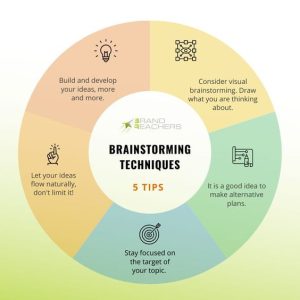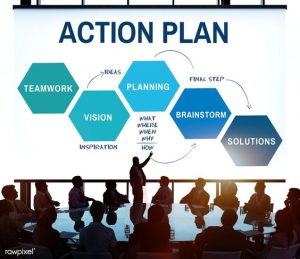What is the Purpose of Brainstorming During the Development of an Action Plan
In the dynamic landscape of strategic planning, one powerful tool stands out – brainstorming. It’s not just about throwing ideas into the air; it’s a structured approach to ideation that plays a pivotal role in shaping effective action plans. Let’s delve into the purpose of brainstorming during the development of an action plan and understand why it’s a cornerstone for success.
The Creative Process of Brainstorming
Generating Ideas
Brainstorming is synonymous with idea generation. It’s the phase where individuals come together to unleash their creativity, fostering an environment where no idea is too outlandish. This process sets the stage for the birth of innovative solutions.
Encouraging Collaboration
Beyond solo ideation, brainstorming encourages collaboration. When minds converge, ideas evolve through shared insights, leading to a more comprehensive and diverse set of possibilities. Collaboration is the heartbeat of effective action planning.
Divergent Thinking
Brainstorming thrives on divergent thinking. It’s not just about finding one solution but exploring various paths to a goal. This approach ensures that the action plan doesn’t limit itself to the conventional, paving the way for unconventional yet effective strategies. Read more articles: Dominant Culture: Overcoming the Odds
Brainstorming Techniques

Mind Mapping
Mind mapping is a visual technique that helps in organizing thoughts. By creating a visual representation of ideas and their connections, mind mapping aids in identifying the relationships crucial for action plan development.
Round-Robin Brainstorming
In a round-robin session, participants take turns contributing ideas. This structured approach ensures that every voice is heard, preventing domination by a few and fostering inclusivity in the brainstorming process.
SWOT Analysis
The SWOT analysis brings a strategic angle to brainstorming. By evaluating Strengths, Weaknesses, Opportunities, and Threats, organizations can chart a course of action that aligns with their internal and external realities.
Role in Action Plan Development
Identifying Goals and Objectives
Brainstorming is the compass that guides the identification of goals and objectives. It clarifies the destination, ensuring that the action plan is a targeted and purposeful roadmap.
Enhancing Problem-Solving
A robust action plan addresses challenges head-on. Brainstorming equips teams with the tools to analyze problems from multiple angles, fostering innovative solutions that go beyond the obvious.
Fostering Team Communication
Effective communication is the backbone of any action plan. Brainstorming nurtures an open dialogue, allowing team members to express their thoughts, ensuring a holistic understanding of the proposed strategies.
Overcoming Challenges in Brainstorming
Dealing with Groupthink
Groupthink can stifle creativity. By being aware of it and actively encouraging diverse opinions, teams can break free from the shackles of groupthink, fostering a more creative and productive brainstorming session.
Managing Time Constraints
In a fast-paced world, time is of the essence. Techniques like timeboxing and prioritizing ideas help manage time constraints during brainstorming, ensuring efficiency without compromising quality.
Handling Diverse Perspectives
Diversity is a strength, but it can also pose challenges. Embracing diverse perspectives during brainstorming enriches the ideation process, leading to more robust action plans that consider various viewpoints.
Benefits of Brainstorming in Action Planning

Improved Decision-Making
Informed decisions are the pillars of successful action plans. Brainstorming lays the groundwork for decision-making by providing a plethora of insights, allowing organizations to make well-informed choices.
Increased Innovation
Innovation is the lifeblood of progress. By fostering a culture of creativity, brainstorming ensures that action plans are not just functional but innovative, setting organizations apart in a competitive landscape.
Strengthened Team Cohesion
Team cohesion is crucial for implementing action plans seamlessly. The collaborative nature of brainstorming fosters a sense of unity, ensuring that the team moves forward with a shared vision and commitment.
Real-world Examples
Success Stories of Organizations Utilizing Brainstorming
Companies like Google and Apple attribute their success in part to effective brainstorming. These industry giants have harnessed the power of collaborative ideation to innovate and stay ahead in their respective markets.
Lessons Learned from Failures in Brainstorming
Not every brainstorming session leads to success. Examining failures provides valuable insights into pitfalls to avoid, helping organizations refine their approach and maximize the benefits of brainstorming.
Tips for Effective Brainstorming
Establishing a Conducive Environment
The physical or virtual environment where brainstorming occurs significantly influences its success. A comfortable and open space fosters creativity and encourages team members to freely express their ideas.
Encouraging Open-mindedness
An open mind is the breeding ground for innovative ideas. Encouraging participants to suspend judgment during brainstorming allows for the exploration of unconventional solutions without fear of criticism.
Using Technology to Aid Brainstorming
In the digital age, technology can amplify brainstorming sessions. Utilizing collaborative tools, virtual whiteboards, and online platforms enhances communication and idea-sharing, especially in remote work settings.
Common Misconceptions about Brainstorming

Dispelling Myths
Misconceptions about brainstorming can hinder its effectiveness. Addressing myths, such as the belief that brainstorming only works for certain types of problems, ensures that organizations fully embrace this valuable tool.
Clarifying Its Role in Strategic Planning
Brainstorming is not a standalone activity; it’s a vital component of strategic planning. Clarifying its role dispels any notion that it’s a one-size-fits-all solution and emphasizes its adaptability to different organizational contexts.
Case Studies
Analyzing How Various Industries Implement Brainstorming
Exploring how diverse industries, from healthcare to technology, implement brainstorming sheds light on the versatility of this tool. Case studies provide real-world examples of how organizations tailor brainstorming to their unique needs.
Demonstrating Positive Outcomes
Examining the positive outcomes of effective brainstorming showcases its tangible impact on action plan development. From increased productivity to innovative breakthroughs, success stories reinforce the value of incorporating brainstorming into strategic processes.
Future Trends in Brainstorming
Integration with Technology
As technology continues to evolve, the integration of AI and virtual reality into brainstorming sessions is on the horizon. These innovations promise to enhance collaboration and idea generation in ways previously unimaginable.
Remote Brainstorming Strategies
The rise of remote work necessitates the adaptation of brainstorming strategies. Future trends include the development of tools specifically designed for virtual collaboration, ensuring that distance does not hinder the brainstorming process.
Conclusion
In conclusion, the purpose of brainstorming during the development of an action plan is multi-faceted. It serves as a catalyst for creativity, a platform for collaboration, and a strategic tool for crafting well-informed plans. Embracing brainstorming is not just a choice; it’s a necessity for organizations striving to navigate the complexities of today’s dynamic business environment.
FAQs
Q. Is brainstorming only effective for creative industries?
A. No, brainstorming is a versatile tool applicable to all industries, fostering innovation and problem-solving.
Q. How can teams ensure inclusivity during brainstorming sessions?
A. Implementing techniques like round-robin brainstorming and actively encouraging diverse perspectives ensures inclusivity.
Q. Can brainstorming be effective in remote work settings?
A. Yes, with the right tools and strategies, remote brainstorming can be as effective as in-person sessions.
Q. Are there common pitfalls to avoid in brainstorming?
A. Yes, pitfalls like groupthink and time mismanagement can hinder the effectiveness of brainstorming sessions.
Q. Is brainstorming a one-time activity or an ongoing process?
A. Brainstorming is ideally an ongoing process, continually feeding into the evolution of action plans and organizational strategies.
